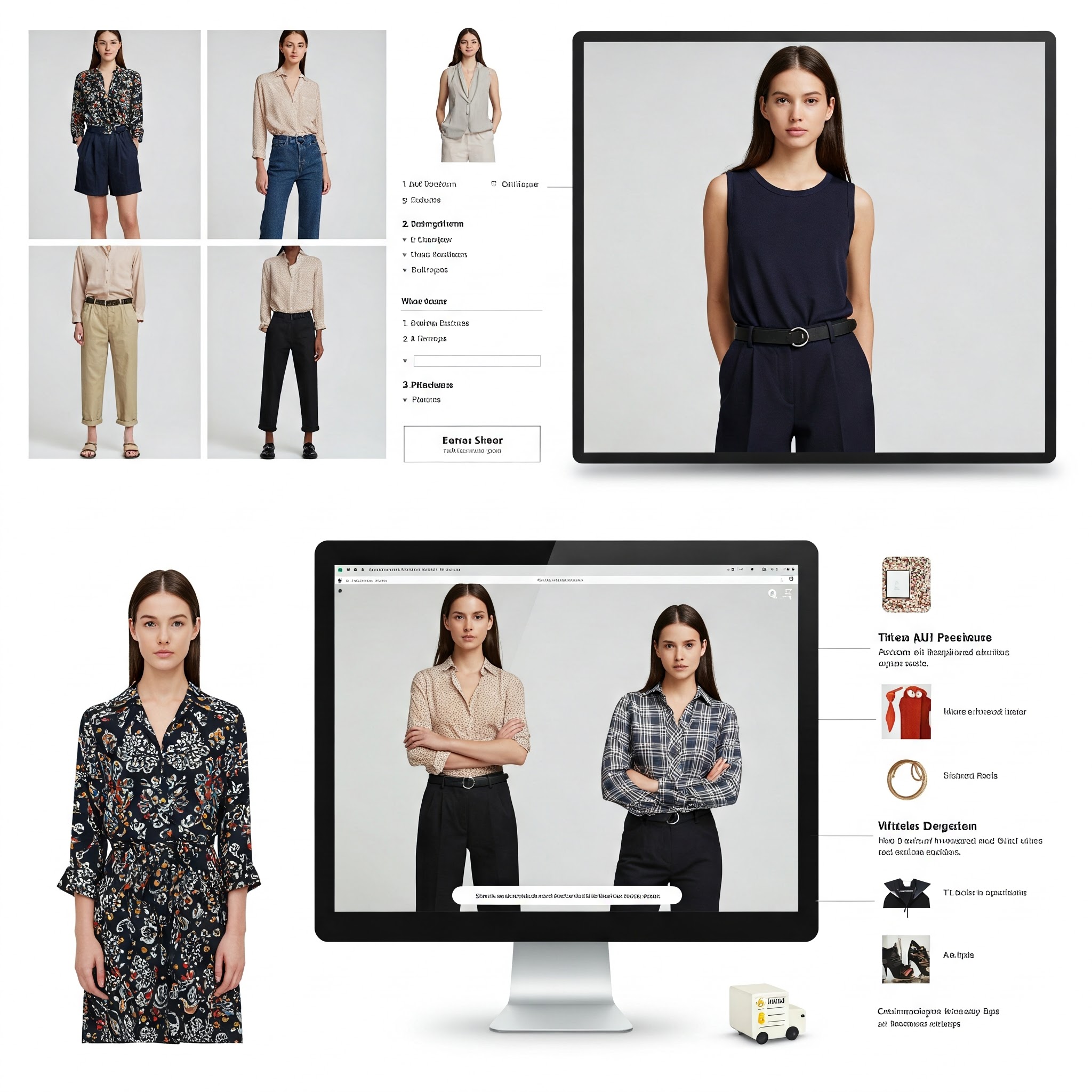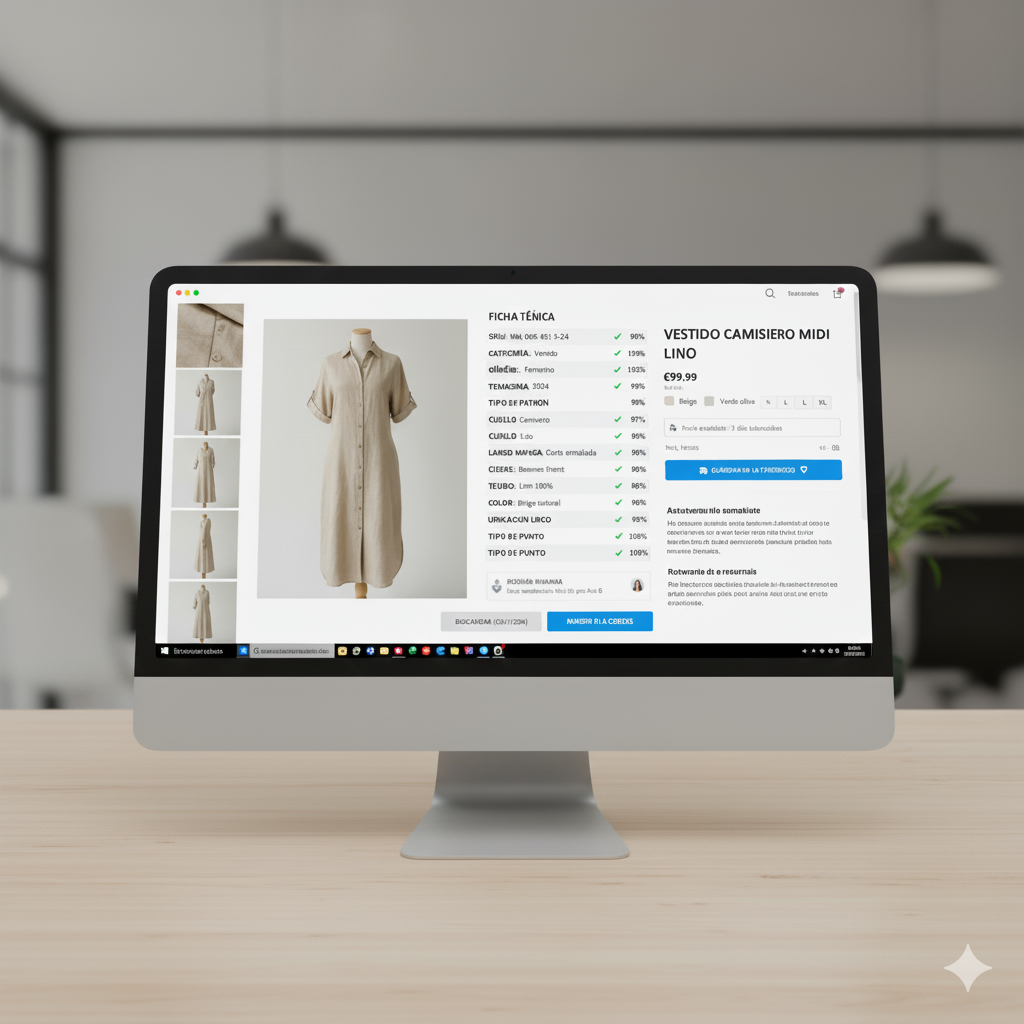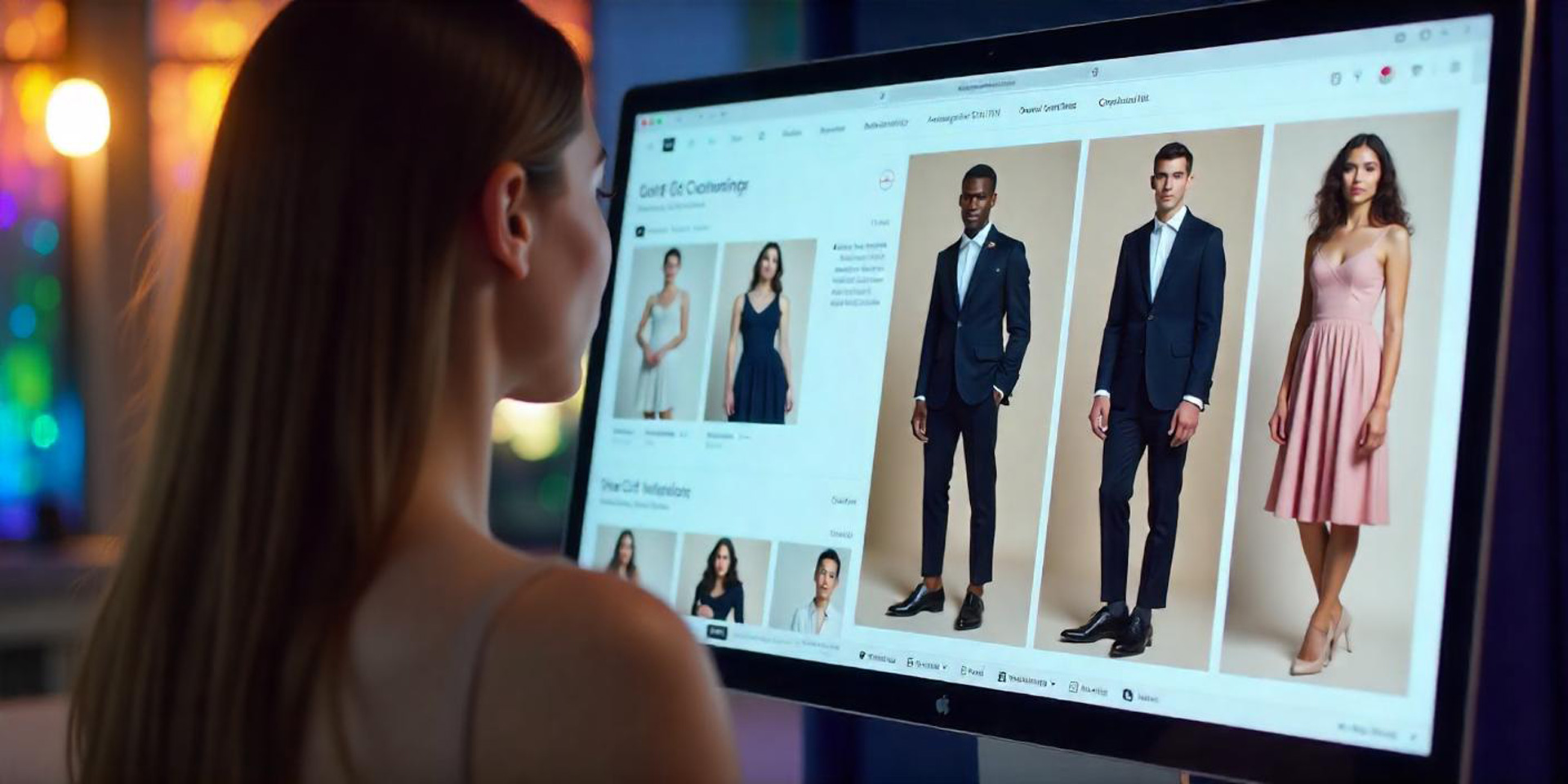What is a Digital LineBook?
A Digital LineBook is a digital, interactive version of the traditional catalogue used in the fashion and retail industry. Unlike static print catalogues, Digital LineBooks empower brands to showcase collections dynamically. They integrate multimedia elements, real-time data, and enriched interactions, significantly enhancing communication with buyers and distributors.
These digital catalogues typically feature high-quality images, comprehensive descriptions, updated pricing, available stock levels, and customisation options. They integrate easily with inventory systems and e-commerce platforms, ensuring a more streamlined sales process.
In a landscape where digital transformation is essential for standing out in a competitive market, the Digital LineBook has solidified its position as a key tool for redefining the B2B channel in fashion. It not only delivers greater efficiency and sustainability but also offers a visual and strategic experience aligned with the expectations of today’s professional buyers. Throughout this article, we’ll explore its benefits, use cases, differences from other solutions like marketplaces, and when to opt for an in-house or external one.
What a Digital LineBook brings to fashion and retail companies
Operational efficiency and cost reduction. Digitalising catalogues enables brands to update information in real-time, reducing errors and improving data consistency. This translates into more agile sales processes and better inventory management.
By eliminating the need to print physical catalogues, companies can save on printing and distribution costs. Furthermore, the ability to update the digital catalogue in real-time reduces the need for costly reprints due to product or price changes.
Improved customer experience Digital LineBooks offer an interactive and personalised experience for buyers. They can explore collections, view products in different colours or styles, and place orders directly from the catalogue, which enhances customer satisfaction and loyalty.
Sustainability Transitioning to digital catalogues contributes to more sustainable practices by reducing paper consumption and the carbon footprint associated with producing and distributing print materials.
Analytics and tracking Digital LineBooks allow brands to gather data on how buyers interact with the catalogue, which products generate the most interest, and what purchasing trends are emerging. This information is invaluable for making strategic decisions and improving future collections.
Digital LineBook Use Cases
Presenting new collections Brands can use Digital LineBooks to launch new collections in an impactful way, reaching a global audience without the limitations of physical events.
B2B Sales Sales representatives can use digital catalogues to present products to retailers and distributors, simplifying the ordering process and reducing the sales cycle.
Virtual trade shows and events In an environment where in-person events may be limited, Digital LineBooks allow brands to participate in virtual trade shows and exhibitions, maintaining visibility and reach.
Training and onboarding Digital catalogues can be effective tools for training sales staff and commercial partners on the features and benefits of products.
The Digital LineBook has become an essential tool for fashion and retail businesses seeking to adapt to a constantly evolving digital environment. By offering an interactive, efficient, and sustainable experience, digital catalogues improve communication with buyers, optimise sales processes, and provide valuable insights for strategic decision-making. Adopting this technology is not only a competitive advantage but a necessity in today’s digital era.
Differences between Digital LineBook and B2B Portal
Although they may appear similar at first glance, a Digital LineBook and a B2B portal for direct catalogue and sales are complementary tools, but each brings a different focus and has specific objectives. Below, I’ll clearly explain what a Digital LineBook offers compared to a B2B portal.
Digital LineBook:
- Is a digital, interactive, and visually rich version of a product catalogue.
- Primarily focuses on presenting and communicating the collection or product line.
- Is optimised for a visual, immersive, and interactive experience.
B2B Portal (Catalogue with direct purchase):
- Is a platform for managing sales and transactions directly.
- Focuses on automating orders, managing stock, payments, and logistics.
- Its priority is transactional functionality over the visual experience.
What specifically does a Digital LineBook offer compared to a traditional B2B Portal?
Better visual storytelling
Digital LineBook allows you to tell a visual and interactive story about each collection. You can incorporate videos, animations, and enriched editorial content to highlight specific details and styles. B2B Portal generally offers a basic visual presentation oriented towards purchasing, less focused on storytelling.
Interactivity and buyer experience
Digital LineBook offers an interactive experience with zoom, rotation, 360° views, interactive hotspots, and other features that engage and maintain buyer interest. While B2B Portal tends to focus on more practical functionalities like filters, shopping cart, and quick invoicing, limiting advanced interactive elements.
User behaviour analysis
Digital LineBook allows monitoring how users interact with collections: which products they view most, where they click, which colours or styles attract the most attention, etc.B2B Portal focuses on more transactional metrics (purchases, abandoned carts, available inventory), less on engagement metrics.
Premium presentations and launches
Digital LineBook is ideal for launches, virtual trade shows, online showrooms, and special events where presentation is key.B2B Portal is more oriented towards recurring sales processes, not necessarily exclusive or temporary launches.
Flexibility in customisation
Digital LineBook allows content customisation for different clients or specific audiences, facilitating a presentation more tailored to different markets, buyers, or stores. B2B Portal has a more rigid structure due to its practical focus on logistics, pricing, and transactions.
Quick Comparative Summary
| Function | Digital LineBook | Standard B2B Portal |
| Visual Storytelling | ✅ High | 🔸 Medium-low |
| Interactivity | ✅ High | 🔸 Low or medium |
| Behavioural Analysis | ✅ Detailed | 🔸 Basic (transactional) |
| Transactional Focus | 🔸 Medium-low | ✅ High |
| Premium Presentations | ✅ Optimal | 🔸 Limited |
| Customisation | ✅ High | 🔸 Limited |
How to choose which to use?
If you want to offer a high-level visual experience, attract new buyers, facilitate collection launches, and strengthen your storytelling → Digital LineBook.
If you are looking for transactional efficiency, direct inventory management, recurring orders, and simplified logistics → B2B Portal.
Ideally, both tools coexist and integrate: the Digital LineBook for initial presentation and engagement, while the B2B portal manages subsequent purchases and orders.
A brand might present a new collection with an interactive Digital LineBook to generate initial interest, then redirect interested buyers to their B2B portal, thereby facilitating direct ordering from there.
The choice of which to implement first (B2B Portal vs. Digital LineBook) depends on the immediate priorities and the stage of development your company is in. Here’s a quick summary to evaluate the decision:
When is it better to start with a B2B Portal? It is advisable to start with a traditional B2B Portal when:
- Priority on transactions: You need to quickly manage orders, payments, invoicing, and inventories.
- High volume of clients and frequent orders: Your clients need ease in managing recurring purchases.
- Need for immediate operational scalability: Your immediate priority is to improve efficiency in stock management, logistics, and commercial processes.
- Defined internal operations: You have a robust internal process and need to digitalise it for greater efficiency.
- Urgent integrations: You are looking to quickly integrate with ERP, CRM, or logistics platforms.
When is it better to start with a Digital LineBook? It is advisable to start with a Digital LineBook if:
- Brand and storytelling are key: The visual and interactive presentation of your collections is essential to attract new clients and buyers.
- Launch and virtual events are priorities: You need to showcase your products impressively at trade shows, virtual showrooms, or digital events.
- Focus on initial customer acquisition: You are looking to rapidly expand your network of buyers and distributors through an engaging experience.
- Limited initial budget and time: A Digital LineBook can be quicker and less expensive to implement than a full transactional portal.
- Early analysis of customer interest: You want to understand preferences and behaviour before developing the more complex transactional part.
Ideally, a company should consider both tools as complementary, but if a sequential strategy must be chosen:
- Start with the B2B Portal if internal processes require immediate efficiency. You already have consolidated and recurring buyers, and commercial and logistics operations are critical and urgent.
- Start with the Digital LineBook if you want to test commercial interest before investing in a complete solution, you need to present your collection impactfully at virtual or physical events, and you seek to improve brand positioning and generate initial interest quickly.
Own Digital LineBook or marketplaces
Choosing between having your own Digital LineBook or using marketplaces like JOOR or NuORDER, FAIRE, or similar depends on the size, budget, and strategic objectives of each company.
An own Digital LineBook offers maximum brand control, deep customisation, and direct access to customer data. It is ideal for medium or large brands with significant budgets and internal technical resources, looking to strengthen their branding, offer exclusive experiences, and optimise integrated processes long-term. However, it requires a considerable initial investment and ongoing marketing and technical maintenance efforts.
On the other hand, B2B marketplaces offer immediate access to a wide global network of buyers, low initial costs, and rapid implementation. This is especially beneficial for small or emerging brands seeking to quickly expand their commercial base with minimal financial and technological risk. In return, margins are sacrificed due to commissions, control over the user experience is limited, and direct interaction with the end customer is restricted.
Many brands combine both strategies: they start on marketplaces to gain visibility and, after growing, invest in their own portal. This mixed approach balances immediate reach with long-term control, optimising benefits, costs, and operational efficiency.
The other B2B tool: Digital Showroom
This is an immersive digital experience for presenting products, imitating or replacing the traditional physical showroom.
The main objective is to create impactful visual experiences, generating engagement and storytelling around collections.
Key features include intensive use of multimedia (videos, virtual tours, 3D models or augmented reality), more sophisticated interactions (virtual reality, live streaming, real-time video conferences), with a significant focus on marketing and brand promotion beyond simple ordering.
Typical use cases for a Digital Showroom might be virtual events for collection launches, digital trade shows or interactive exhibitions, as well as premium presentations to key clients held in the brand’s or agents’ showrooms.
Which to choose according to context
A Digital LineBook is the best option for brands looking to efficiently digitalise their catalogue and optimise their direct commercial processes with B2B buyers.
A Digital Showroom is more suitable for brands wanting to enhance their storytelling, conduct impactful launches, or capture the attention of new clients in a more emotional and memorable way.
Many brands integrate both: a Digital Showroom for special events and initial promotion, while a Digital LineBook is used for subsequent follow-up and commercial management.
Comparison: Digital LineBook vs B2B Portal vs Digital Showroom
| Aspect | Digital LineBook | B2B Portal | Digital Showroom |
| Main Objective | Present catalogues visually & interactively | Manage B2B orders & commercial relationships | Create immersive brand experiences |
| Focus | Visual + transactional | Operational + logistical | Emotional + promotional |
| Typical Use | Reorders, collection presentations | Direct ordering, distributor management | Launches, trade shows, virtual showrooms |
| Content Type | Photos, variants, prices, stock, tech data | Catalogue w/ custom prices, order history | Multimedia, 360º, videos, interactions, storytelling |
| Interaction Level | Moderate: navigation, filters, product selection | High: orders, payments, CRM, ERP integration | High: virtual tours, live video, animations |
| Customisation Level | High (visual & content) | Very High (functional & operational) | Very High (visual & brand experience) |
| Sales Channel | Stylish B2B sales support | Primary B2B transactional channel | Promotional & initial attraction channel |
| Tech Level Required | Medium | High | High |
| ERP/CRM Integration | Optional | Recommended & common | Optional |
| Estimated Investment | Medium | High (development & maintenance) | Medium-High (depends on immersion level) |
| Ideal Use Cases | Brands with large catalogue needing clear presentation | Companies w/ established B2B & complex processes | Premium brands or international launches |
| Main Benefit | Agility & clarity in commercial communication | Automation & full control of B2B channel | Visual impact, branding, new buyer attraction |
If you need more information about any of the tools we’ve mentioned, you can visit corporalabs.com and contact us. We have solutions tailored to each client, from emerging brands to major players in the retail sector.






